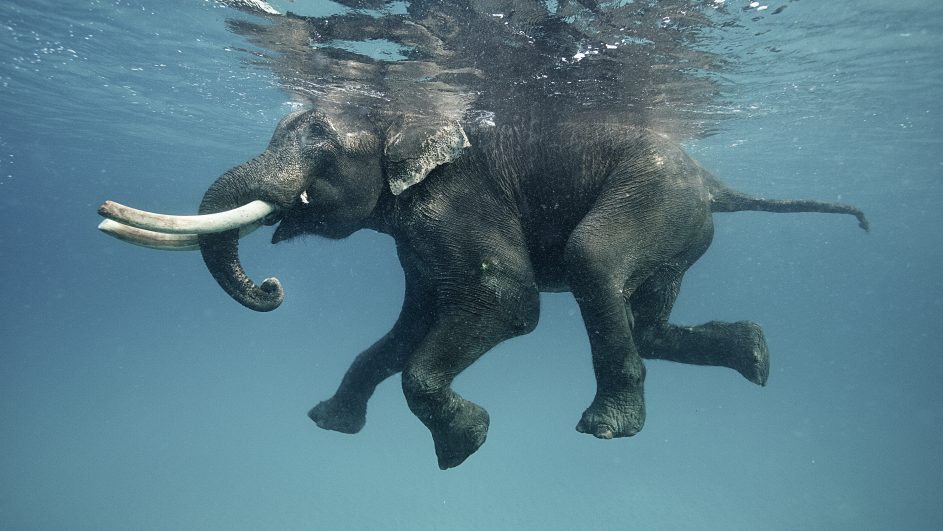Nature
The Andaman Islands
Synopsis
Remote. Beautiful. Mysterious. Unique. Jewels in the Indian Ocean.
The hundreds of islands that make up the Andaman archipelago are little worlds of their own, set apart, where life has evolved in splendid isolation. Sunshine, satin seas, pristine golden beaches and emerald waters. The Andaman and Nicobar Islands are Nature’s paradise tucked away in the corner of the Indian Ocean.
But this paradise has a wilder side. Some of the islands are in the firing line of the most devastating storms and tsunamis. All living creatures on the islands have had to adapt to survive, becoming either specialist or opportunist.
Some of the native inhabitants are seafarers, others began life as castaways and a few evolved into species of their own. From the closest living cousin of the Dodo, to the largest crabs on Earth, from colourful underwater killers, to prehistoric giants of the deep, the Andaman and Nicobar Islands are home to a vast array of wildlife that is both spectacular and unique to these islands.
But how did these creatures get here? And how have they survived? And who are the ancient human tribes that arrived here some 60,000 years ago, whose mysterious lives have intrigued explorers and scientists for centuries?
Away from the sunny beaches and crystal shallows, there is a treasure trove of life hidden in the dense forests. From mangrove labyrinths to underground limestone caves, from active volcanic islands, to unexplored jungle, there’s much more to these islands than meets the eye.
This is the untold story of life in the Andaman and Nicobar Islands.
EP01: WILD SHORES AND PRISTINE FORESTS
These wild shores tell spectacular tales. Bales of Leatherback Turtles return each year to lay all their eggs in perfect synchrony – truly a spectacle of Nature. There’s safety in numbers but even so, only 6% of all hatchlings survive.
The Nicobar Pigeon is the closest living relative to the Dodo. With its bright iridescent plumage, red legs and flamboyant courtship ritual, it’s a world apart from its extinct cousin.
Monsoons in this region can be catastrophic, but many islands have evolved their own defence – mangrove forests. Flooded twice a day at high tide, the mangroves are a rich and unique ecosystem and fertile feeding grounds for birds, amphibians and reptiles.
Nicobar Long-tailed Macaques: new research reveals their ingenious tool use. Much like humans, Macaques floss their teeth, using tree needles, grass blades and bird feathers!
Barren Island Goats are surely the world’s toughest! Living on this inhospitable, active volcanic island devoid of fresh water, these goats have adapted to drink sea water.
Wild elephants used to famously swim in the crystal waters here. Imported to help humans, their descendants now live a peaceful semi feral life on Interview Island.
Robber Crabs are the world’s largest living crab – 3ft from pincer to tail – with claws that can rip open a coconut. No surprise that they live a solitary existence!
EP02: UNDERWATER WONDERLAND
The waters of the Andaman Sea are home to a dynamic community of living creatures that will truly astonish and amaze.
Rock pools are mini water-worlds that are the stage for the thrills and dramas played out by the creatures that depend on these thriving little pools of water.
They might look like filigree underwater gardens, but coral reefs are living colonies offering shelter to millions of tiny creatures. The reef is an intricate network of ever-growing structures, home to fish and marine reptiles and even larger marine species. This is a carnival world, rife with collaboration, competition and combat. While it is a fascinating spectacle for thousands of amateur divers, the reef astonishes scientists who continue to find unknown species and make new discoveries about species we thought we knew.
With the largest brains of any fish, manta rays have enough smarts to make the average dolphin jealous.The warm waters teem with almost every kind of shark – from zebra and whale sharks, hammerheads, white/grey/black tipped sharks and nurse sharks.
Cone snails are tiny but lethal; this voracious predator uses a venomous harpoon to kill in seconds!
Large tooth flounders are starting life as a normal fish… but then their right eye travels across its head as it grows and joins its left eye… ending up like something out of science fiction!
EP03: CONNECTED LIVES
Finally, we embark on a journey into the primeval life of the Andaman Islanders. We explore the relationships between humans and animals to show that all life here is connected by the ancient rhythms of island life. No story of the Andaman Islands is complete without exploring its unique tribal communities, that have survived thousands of years. Some are still at the hunter-gatherer stage of economy, others continue to rebuff all contact with the outside world. Their ancient lifestyle is the last living link with our own history and they live in harmony with the animals they share these stunning islands with.
Crocodiles, the islands’ deadliest inhabitants, used to rule the mangrove swamps and estuaries, but are now encroaching on human territory. People believe the upheaval of the 2004 tsunami created new salty waterways for the crocs which are becoming bolder and more opportunistic by the day. Dugongs have gone AWOL in the Andamans and in an attempt to conserve these almost mythical creatures, scientists are employing drones to locate them. For centuries, the Islanders have revered the dugong and its disappearance would have a significant cultural impact on them.
In Episode 1 we saw the turtles laying their eggs, but where they go once they’ve nested, remains a mystery. An ambitious turtle tagging and monitoring program is underway to solve this mystery and boost turtle conservation.
A unique world of its own, remote, undiscovered and full of surprises. This is the untold story of life on the Andaman Islands, which truly deserve to be called Jewels in the Indian Ocean.

